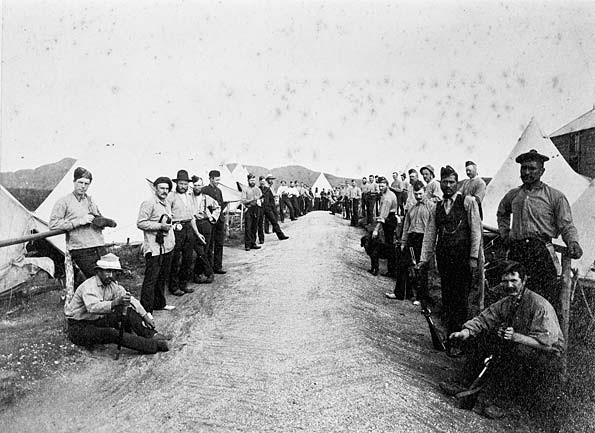Due to scheduled maintenance on Friday 19th April 2024 between 7:00PM and 9:00PM AEST, the Scootle website may face disruption in service. We apologise for any inconvenience caused.
 Armed Constabulary camp near Parihaka, 1881
Armed Constabulary camp near Parihaka, 1881
TLF ID R4690
This is a black-and-white photograph of a New Zealand Armed Constabulary camp near the settlement of Parihaka, Taranaki (halfway down the west coast of the North Island) in 1881. Several dozen uniformed men are lined up on either side of a track. Some are leaning on a railing that runs alongside the track on each side, and one man is holding onto a dog. Some of the men hold guns. There are tents behind the men, while a small part of a more substantial building is visible on the right-hand side of the photograph. The photograph measures 10 cm x 13 cm.
